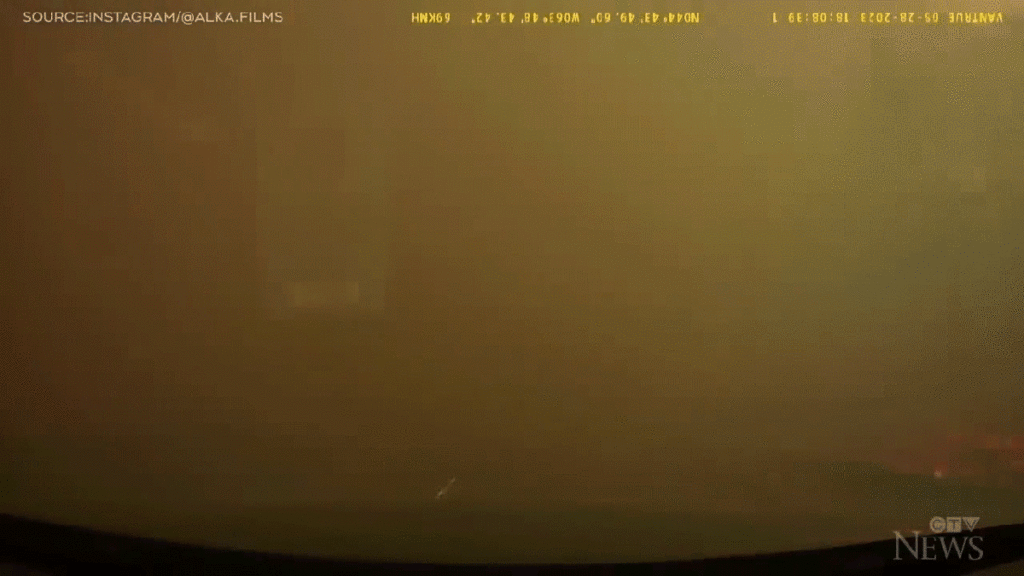If You Must Drive Through Wildfires Turn On Your Blinkers For The Love Of God

Wildfires are currently ravaging Canada, throwing a blanket of particle-filled smoke across major cities both at home and in parts of the American northeast and midwest, turning New York City into a Philip K. Dick-style dystopia.
Cristo Fernandez Is Playing His First Car In The New ‘Transformers: Rise Of The Beasts’
This video, though, comes to us from Nova Scotia’s capital of Halifax, according to the Independent, where fires have ripped through almost 60,000 acres and forced over 18,000 people from their homes.
Here you can hear firsthand the fine Canadian tradition of side-seat driving, right before the shocking sudden stop.
Drivers dodge flames and smoke from Nova Scotia wildfire | DRAMATIC VIDEO
A really good idea, however, is to not stop in the middle of the road for no reason. And turn on your goddamn blinkers, son! They’re called hazard lights for a reason, and driving through a burning landscape that looks like a metal band album color is downright hazardous!
Wildfire smoke and ash isn’t just dangerous for you, but for your car as well, affecting everything from paint finish to air filters. You want to avoid driving through just the ash, let alone the actual fire, but for those who need to evacuate suddenly, there isn’t always a good option. The University of Virginia’s School of Emergency Management has a few more tips for if you ever find yourself in this perilous situation:
Stay in your car. Though driving through wildfire is dangerous, it is much less dangerous than trying to run from a fire on foot. Do not run! Roll up windows and close air vents. Be prepared for discomfort.Engines may stall and be tough to restart.Air currents may rock the car.Some smoke and sparks may enter the vehicle.The temperature inside will increase. Metal gas tanks and containers rarely explode.Keep your vehicle as visible as possible. Drive slowly with headlights on. Avoid driving through heavy smoke. Watch out for other vehicles and pedestrians.If you have to stop, Avoid parking near heavy trees and brush. Roll up windows and close air vents. Turn the headlights on and the ignition off.Get on the floor and cover up with a blanket or coat. Stay in the vehicle until the main fire passes.
There aren’t a lot of places in Canada to go to avoid the fires, unfortunately. A map of yesterday’s fires showed a majority of provinces are experiencing some kind of fire. And if you’re not near a fire, you’re getting hit with the smoke. The result of this is air so polluted that it can irritate skin and eyes, burn lungs, and reduce visibility to nil.
Canada certainly has never seen such large-scale destruction so early in its fire season, which runs between May and December. Millions of acres have been lost and, with current destructive weather patterns holding, millions more will likely burn. We can expect the hazy skies and dangerous air and destruction to continue, according to CBS.
Wildfires in the last few years have only gotten wilder as climate change ramps up. Fires in 2017 threatened Los Angeles commuters, and returned with even greater vengeance in 2020.







